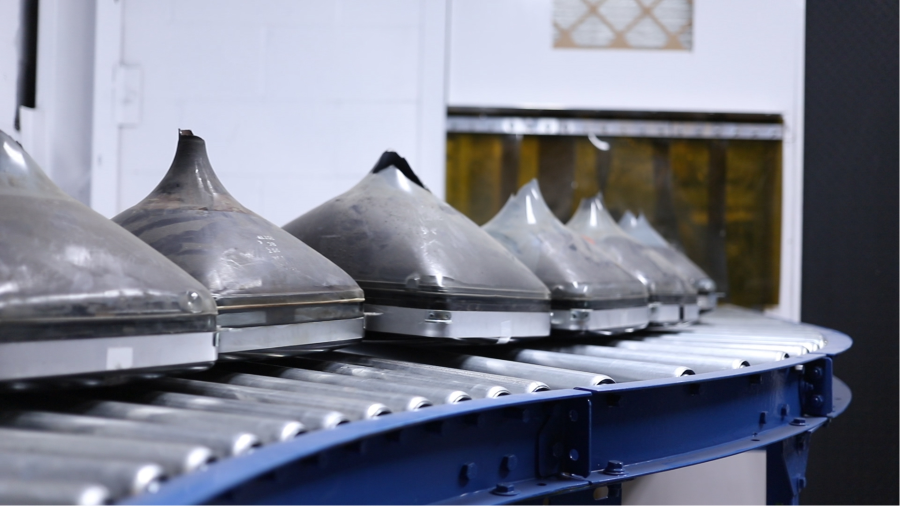
CRTs move along a GreenChip conveyor. | Courtesy of GreenChip
Several million dollars worth of equipment upgrades at GreenChip over the past year-plus have included a bolstered operation for processing CRT glass, the company’s managing partner said.
“We see the need to supply a long-term solution to our OEM customers and our customers who we are the downstream to,” said Bill Monteleone, managing partner at the electronics recycling and reuse company.
Headquartered in Brooklyn, N.Y., GreenChip has a facility in Fredericksburg, Va. that includes a large shredding and separation system and CRT processing capabilities. The company is also working to build an “eco-campus” at the King George Industrial Park outside of Fredericksburg.
In the past, GreenChip’s CRT recycling has usually involved stripping devices down to the tubes, which were sent to traditional downstreams, he said. One of those was Novotec Recycling, a Columbus, Ohio company that processed CRT for consumption by smelters but has since stopped taking in material.
Overall, the downstream CRT markets presented uncertainty, he said. “And now, because of that hardship, we said, ‘Let’s come up with a GreenChip solution,'” Monteleone said.
Shortly after the company’s 2020 opening of its Fredericksburg plant, GreenChip began beefing up its CRT capabilities in Fredericksburg. The company installed equipment to shred, crush and screen glass. The system, which has been “up and running strong” for the last six to eight months, can separate the leaded and unleaded portions, said Monteleone, who didn’t want to disclose specifics of the proprietary process.
“We had to design this with as close to a zero-stockpile model as we could.”
–Bill Monteleone, managing partner at GreenChip
The processing approach was informed by GreenChip’s parent company, Allocco Recycling, a New York company with years of experience recycling large amounts of aggregate, said Monteleone, who was previously director of sales for Allocco.
GreenChip built a “robust” system with large throughput, he said, adding that it can process more than GreenChip could receive in a day. “The equipment is scalable as far as throughput,” he said. “If we’re processing more, we could basically crank it up to output more.”
Monteleone said GreenChip will never stockpile CRT materials, a point he considers non-negotiable. “We had to design this with as close to a zero-stockpile model as we could,” he said.
All told, the company has invested “several million dollars” in equipment upgrades over the past year or so, although that sum went toward more than just the CRT glass processing equipment and also includes additional sorting equipment for its e-scrap shredding and sorting line.
Seeing reliable downstream demand
GreenChip is processing glass for consumption by a lead producer, he said, a long-term strategy that brings stability for GreenChip’s customers.
“The idea of looking for a unicorn and being too fancy and being too cute with a solution I feel was maybe the downfall of some of the past solutions,” Monteleone said. “And we decided to keep it simple and … not over engineering it but relying on the best people in the world who handle lead already.”
Lila Gloyd, GreenChip’s senior vice president of sales and marketing, said the capacity limitation is dictated by the smelter’s appetite, although that appetite is limitless if you can get them the material in the way they want it.
Gloyd was not able to disclose which lead producer GreenChip is sending glass to, but “they are one of the leading lead recovery operations in the world,” she said, and “they don’t fluctuate in appetite for product.”
“We need to feed the beast, so to speak,” Monteleone said.
His research leads him to understand that the downstream appetite for glass is in line with the volume of material remaining in the U.S. He acknowledged the end-of-life CRT weight is diminishing, which he called good for the world.
Still, he’d like to see the last CRT display device recycled “quickly and efficiently” at a GreenChip facility, he said.
“When everyone’s running away from the CRT stream, we’re walking into it with a fresh mind,” he said.


